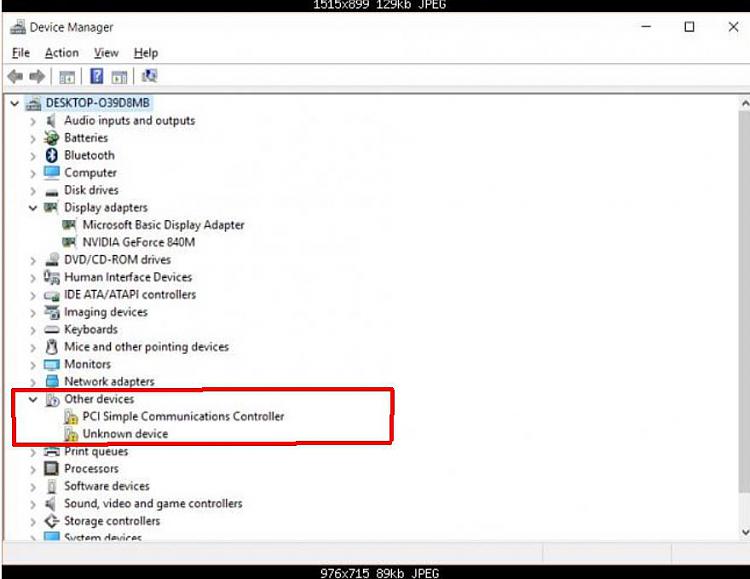Nvidia Geforce 840M

The Nvidia GeForce 840M is a mid-range graphics processing unit (GPU) designed for laptops, introduced by Nvidia in 2014. Based on the Maxwell architecture, this GPU is part of the GeForce 800M series, which aimed to provide improved performance and power efficiency compared to its predecessors. The 840M is manufactured using a 28nm process and features 384 CUDA cores, with a base clock speed of 1124 MHz and a boost clock speed that can reach up to 1242 MHz, depending on the cooling system and power management of the laptop it’s integrated into.
Performance Overview
In terms of performance, the Nvidia GeForce 840M is capable of handling casual gaming, video playback, and other graphics-related tasks with ease. It supports DirectX 12, OpenGL 4.5, and Vulkan, ensuring compatibility with a wide range of games and applications. The GPU’s performance is slightly above the Intel Iris 550 integrated GPU but below that of higher-end dedicated GPUs like the Nvidia GeForce 850M or 860M.
For gaming, users can expect to play less demanding modern games at medium to high settings at resolutions of up to 1080p, with frame rates that can often reach or exceed 30 FPS. More demanding games might require lowering the graphics settings to achieve smooth gameplay. The 840M also supports Nvidia’s Optimus technology, which automatically switches between the integrated GPU and the 840M to balance performance and battery life.
Technical Specifications
- CUDA Cores: 384
- Memory Type: DDR3
- Memory Interface: 64-bit
- Memory Bandwidth: 16 GB/s
- Base Clock Speed: 1124 MHz
- Boost Clock Speed: Up to 1242 MHz
- DirectX Support: 12
- OpenGL Support: 4.5
- Vulkan Support: 1.1
- Nvidia Optimus: Yes
- Nvidia PhysX: Yes
- Nvidia CUDA: Yes
Comparison and Market Position
At the time of its release, the GeForce 840M was positioned as a step up from the integrated graphics solutions available in most laptops, offering dedicated graphics capabilities for enhanced gaming and multimedia experiences. It competed with AMD’s Radeon R7 M260 and R7 M265, which offered similar performance levels. While it outperformed Intel’s integrated graphics solutions, it was not as powerful as the higher-end models in the GeForce 800M series.
Legacy and Upgrade Considerations
Today, the Nvidia GeForce 840M is considered outdated, especially in the context of modern gaming requirements and the advancements in both integrated and dedicated GPU technologies. For users looking to play newer games or run more demanding applications, laptops equipped with the 840M may struggle to provide satisfactory performance. Upgrading to a laptop with a newer, more powerful GPU like those from the Nvidia GeForce 16 series or AMD’s Radeon RX series would be advisable for those seeking smoother gaming experiences and better support for emerging technologies.
Conclusion
The Nvidia GeForce 840M was a solid mid-range GPU option for laptops when it was introduced, offering a balance between performance and power efficiency. However, as with all technology, it has been surpassed by newer models that offer better performance, lower power consumption, and support for the latest technologies. For those currently using laptops equipped with the 840M, understanding its capabilities and limitations can help manage expectations regarding its performance in modern applications and games.
Frequently Asked Questions
What is the performance level of the Nvidia GeForce 840M in modern games?
+The Nvidia GeForce 840M can handle casual gaming and less demanding modern games at medium to high settings at 1080p resolution, often achieving frame rates above 30 FPS. More demanding games may require lower graphics settings.
Can the Nvidia GeForce 840M support 4K video playback?
+Yes, the Nvidia GeForce 840M supports the playback of 4K videos. However, the actual performance may vary depending on the specific laptop’s hardware and the source of the video content.
Is it possible to upgrade a laptop’s GPU, specifically from the GeForce 840M to a newer model?
+Generally, upgrading a laptop’s GPU is difficult and often not feasible due to the integrated design of most laptops. The best option for significantly improved graphics performance is usually to purchase a new laptop with a more powerful GPU.